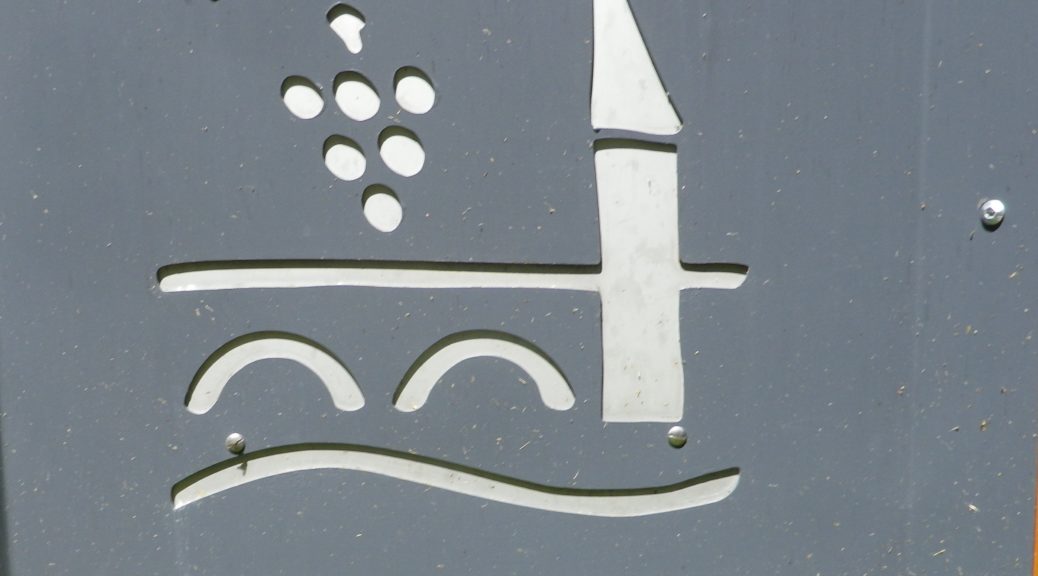What I Learned:
The Franconia wine region (Franken, in German) has several wine districts, and the Maindreieck district is perhaps the best known. Set along the Main river, it has some of the region’s most famous vineyard sites, dramatic scenery, and a thriving wine trade since the early Middle Ages.
Dreieck in German means triangle. The Maindreieck is a triangle of land surrounded on three sides by the Main River, a major tributary to the Rhine River. The river makes three dramatic curves close to the heart of Franconia, forming this triangular “peninsula”, hence the name of this viticultural area in south central Germany. The most important and undoubtedly best-known town for wine culture in this area is Wuerzburg, which in addition to some of the most well-known vineyards in Franconia, has the extremely popular wine bar on the old bridge.
But vineyards all along the river in this district enjoy a climate mild enough to grow grapes, and slopes with good exposure to the sun and wind. Hence grapes reach good ripening levels in this district, and the resultant wines are well-esteemed.
This area, along with the rest of Franconia, has several varietals. The most popular wine in Franconia overall is Silvaner. A local favorite, this varietal has been grown in the Franconia area since the 17th century, and is one of the more important varietals for this particular area. Many locals prefer it over Riesling. And while Riesling is the most planted varietal in Germany, it is less so in Franconia. Here, true to form, many Riesling wines take on a mineral flavor determined by the primarily limestone soils. Mueller-Thurgau, a hybrid varietal also known as Rivaner, produces a light, fruity wine. In Franconia, it is currently more widely planted than Silvaner. The Scheurebe is especially cultivated in the Steigerwald district, which is a bit more remote from the river, and in a higher elevation overall. Bacchus is one of the least known varietals outside this area. It is a cross between a Riesling and Silvaner, and with a Mueller-Thurgau. Often vinified as an off-dry wine, it is fruity and easy to drink. Just in time for summer!
Finally, in this sea of white wine varietals, there is Domina. Grown primarily in Franconia (vice elsewhere in Germany), this relatively unknown red wine varietal is a cross between Spaetburgunder and Portugieser. Upon vinification, it results in a flavorful, dry, full-bodied red wine.
What I Tasted:
(In keeping with the associated cycling itinerary, the wines highlighted below focus only on wines from wineries or vineyards on the eastern side of the Maindreieck “peninsula.”)
2016 Brennfleck Cuvee Rot, Deutscher Qualitaetswein, Trocken, Weingut Brennfleck (Sulzfeld am Main): A dry red wine blend (Dornfelder and Spaetburgunder) with medium plus garnet color; bright, spicy nose with mildly spicy, and slight wood flavors; medium minus tannins.
2016 Silvaner, Trocken, Deutsche Qualitaetswein, Weingut Apfelbacher (Dettelbach): A dry white wine with dark minus gold color, nose of pear, with pear and toasted almonds flavors; medium plus acidity, with a smooth and velvety aftertaste.
2016 Bacchus, Halbtrocken, Deutsche Qualitaetswein, Weingut Apfelbacher: A semi dry white wine with medium plus gold color, nose and flavors of ripe pear, peach, nectarine and apricot; medium plus acidity, with a smooth, velvety mouthfeel.
2015 Silvaner, Trocken, Qualitaetswein, GWF (Winzergemeinschaft Franken) (Kitzingen): A dry white wine with medium gold color; a spicy, sweet-and-sour nose, with peach, honeydew melon and spice flavors; medium, slightly tart, finish with mild plus acidity.
2014 Domina, 1er Traube, Wipfelder Zehntgraf, Deutsche Qualitaetswein, Trocken, GWF: A dry red wine with dark purple-red color; an oak and dried cherry nose, with dried cherry, blackberry and oak flavors; a surprisingly long finish with surprisingly mild tannins.
